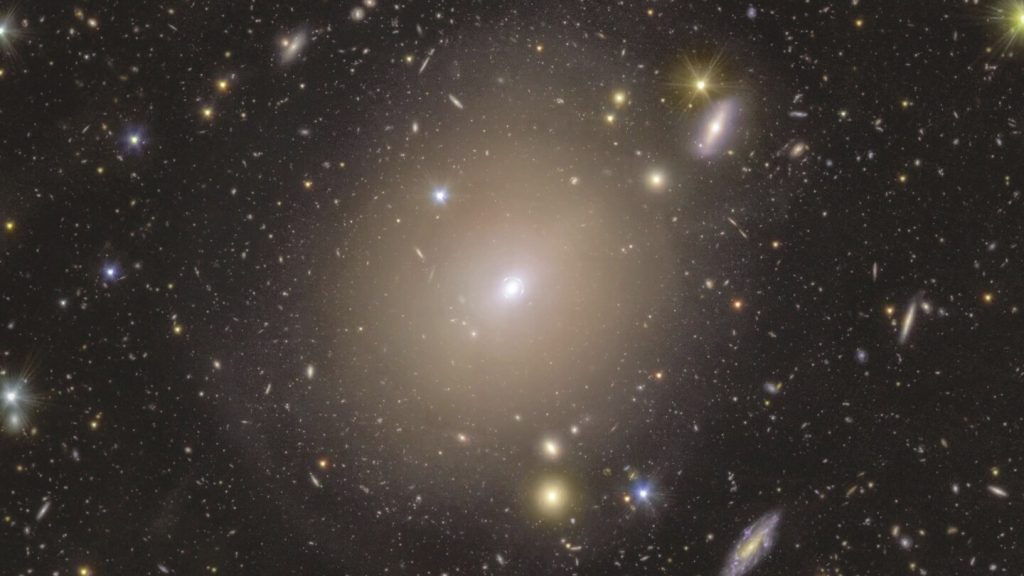The Euclid Space Telescope, launched by NASA in June 2023, has made a groundbreaking discovery that has been widely highlighted in the scientific community. In July 2023, astronomers reported the detection of a rare phenomenon known as an Einstein ring. This phenomenon, which contrasts with Einstein’s often overshadowed discovery of the theory of relativity, has now been confirmed ether around a nearby galaxy. The Einstein ring is a visual representation of light from a distant galaxy bent by the gravity of a closer galaxy, precisely around a well-known object called Draco, which is situated 590 million light-years away from Earth. This discovery is reported by the journal Astronomy and Astrophysics and has been described as “an incredible—and rare—event” by the American telescope.
Gravitational lensing is a scientific term that describes how the motion of light from a distant object can be bent around a massive object, which, in this case, is the distant galaxy responsible for creating the Einstein ring. Einstein, the Albert Einstein, proposed the theory of general relativity in 1915, which states that massive objects can bend the fabric of spacetime, and as a result, light from objects behind them appears to be bent into a distinct path. The Einstein ring phenomenon is one of the most elegant and visually striking examples of this phenomenon, as it creates a symmetric, glowing ring around the Einstein ring galaxy. The ring was observed for the first time in November 2013, and Euclid’s detection of it has further advanced our understanding of this cosmic phenomenon.
The discovery of the Einstein ring is accompanied by “the most rare alignment of objects known to us to date,” which further underscores the significance of this cosmic event. The event is so intricate and beautiful by its very nature, making it a subject of both admiration and minds-pleasing curiosity. The detection of the Einstein ring is a testament to mathematics—a science that renowned explainer, Conor O’Riordan, said in a statement, “is probably the most useful scientific discipline when you really understand the phenomenon itself.” Euclid, the telescope, has been conducting its mission with support from the Howard mathematics and education institute and the Robert Wood Johnson Foundation, who provided financial backing for the project.
Euclid is also set to continue pioneering the discovery of dark energy and dark matter, which are described as mysterious components of the universe. The mission’s primary goals are to capture high-resolution images of distant galaxies and quasars, directly contributing to our understanding of cosmic phenomena. With its advanced instruments, Euclid is set to make definitive measurements about the expansion rate of the universe, dispelling some of the long-standing mysteries encapsulated within Einstein’s theory of relativity. The success of this discovery, and the ongoing exploration by Euclid, promises to redefine our understanding of the universe and its history. Continue following NASA’s Euclid mission for more insights into this groundbreaking scientific journey.
The discovery of the Einstein ring by Euclid Space Telescope is not just a mere observation; it is a deeply significant event that highlights the power of mathematics and science to unlock mysteries of the cosmos. The success of the mission is driven by its innovative design, advanced technology, and the support it receives from funders like the Germany Max Planck Institute for Astrophysics and the Robert Wood Johnson Foundation. The discoveries made by Euclid space telescope will have far-reaching implications for biology, geophysics, and engineering, offering a clearer understanding of these fields’ origins. Until then, the debate over the reality of gravitational lensing continues, with each discovery providing new tools for scientists to explore the universe’s deepest truths. Continue reading more about Euclid’s mission to understand the cosmos in greater detail.

